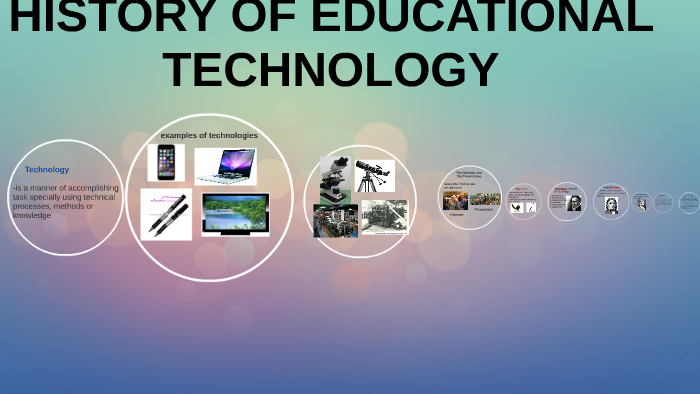In the digital age, educational technology has emerged as a powerful tool transforming the landscape of teaching and learning. As technology continues to advance at an unprecedented pace, its integration into education has become inevitable. Educational technology, also known as EdTech, encompasses a range of tools, resources, and strategies designed to enhance the learning experience, improve educational outcomes, and foster student engagement. This article explores the concept of educational technology, its historical roots, key components, benefits, challenges, and future prospects.
Historical Background
The roots of educational technology can be traced back to the early 20th century when the use of films, radio, and television began to find its way into classrooms. However, it wasn’t until the advent of computers and the internet that educational technology truly gained momentum. In the 1960s, computer-assisted instruction (CAI) emerged, offering interactive learning experiences. The subsequent decades witnessed significant advancements in hardware, software, and multimedia tools, leading to the proliferation of computer-based learning.
Components of Educational Technology
Educational technology comprises various components that synergistically contribute to the learning process. Firstly, hardware encompasses physical devices, such as computers, tablets, interactive whiteboards, and virtual reality headsets, which facilitate access to digital resources. Software refers to the programs, applications, and learning management systems that deliver instructional content and facilitate interaction.
Multimedia elements, including videos, images, and animations, engage students and cater to diverse learning styles. Internet connectivity enables access to vast educational resources, online collaboration, and distance learning opportunities. Additionally, educational technology relies on pedagogical theories and instructional strategies to design effective learning experiences.
Benefits of Educational Technology
The integration of educational technology offers numerous benefits to students, teachers, and educational institutions. Firstly, it promotes active and personalized learning, allowing students to learn at their own pace and explore topics that interest them.
Interactive multimedia content and gamification techniques make learning engaging and enjoyable, enhancing student motivation and retention. Educational technology also supports differentiated instruction, enabling educators to cater to individual learning needs and provide targeted interventions.
Moreover, educational technology expands learning beyond classroom walls. With online platforms, students can access educational resources, collaborate with peers, and communicate with teachers anytime, anywhere. Distance learning opportunities have gained prominence, breaking geographical barriers and increasing educational accessibility for learners of all backgrounds.
Furthermore, educational technology equips students with vital digital literacy skills necessary for the modern workforce. As technology pervades various industries, proficiency in using digital tools and platforms becomes increasingly essential. By incorporating technology in education, students gain hands-on experience with digital tools and develop critical thinking, problem-solving, and information literacy skills.
For teachers, educational technology streamlines administrative tasks, facilitates assessment and feedback, and offers a wealth of resources for lesson planning and content delivery. It enables educators to track student progress, identify areas of improvement, and personalize instruction. Collaboration tools also foster professional development among teachers, promoting knowledge sharing and enhancing instructional practices.
Challenges and Considerations
While the benefits of educational technology are substantial, several challenges need to be addressed to ensure its effective implementation. Firstly, there is a digital divide that exists among students due to disparities in access to technology and internet connectivity. Efforts should be made to bridge this gap and ensure equitable access to educational technology.
Another challenge is the need for adequate teacher training and professional development. Educators must be proficient in using educational technology tools and integrating them into their teaching practices effectively. Providing comprehensive training and support is crucial to maximizing the benefits of educational technology.
Additionally, privacy and security concerns arise when students engage with technology, particularly when it involves collecting and storing personal data. Educational institutions must prioritize data protection measures and ensure compliance with relevant regulations.
Future Prospects
As technology continues to evolve, the future of educational technology appears promising. Artificial intelligence (AI), machine learning (ML), and adaptive learning algorithms hold great potential to revolutionize personalized learning experiences. AI-powered chatbots and virtual tutors can provide instant feedback and support to students, augmenting the role of teachers.
Virtual and augmented reality technologies offer immersive learning experiences, enabling students to explore virtual environments and interact with simulated scenarios. This can greatly enhance understanding and retention of complex concepts.
Furthermore, the Internet of Things (IoT) opens up possibilities for smart classrooms, where interconnected devices and sensors create a rich learning environment. IoT can facilitate data collection, automate routine tasks, and provide real-time feedback to students and teachers.
Conclusion
Educational technology has come a long way, transforming education and offering a myriad of opportunities for learners and educators alike. With the integration of technology in education, students can engage in interactive, personalized, and collaborative learning experiences, while teachers can leverage digital tools to enhance instruction and assessment. However, the successful implementation of educational technology requires addressing challenges such as the digital divide, teacher training, and data security.
Looking ahead, emerging technologies like AI, VR/AR, and IoT hold immense potential to shape the future of educational technology and further revolutionize the learning experience. By embracing these advancements and overcoming challenges, we can pave the way for a more inclusive, engaging, and effective educational system in the digital age.


